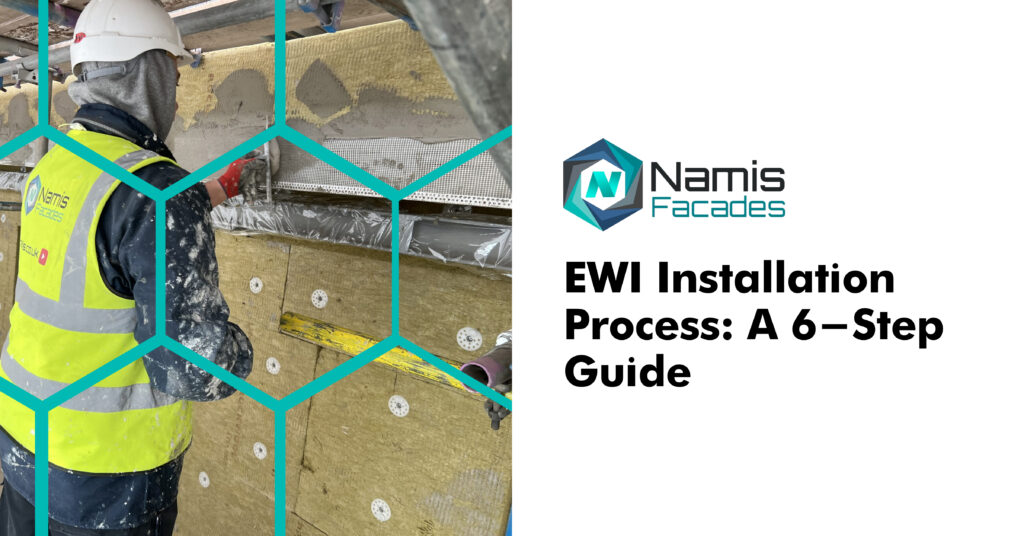Common Issues with Monocouche Render and How to Fix Them

Monocouche render has become increasingly popular as a modern, low-maintenance exterior finish, offering both protection and aesthetic appeal to buildings. However, like any rendering system, it can develop various issues over time that compromise both its appearance and functionality. From hairline cracks and colour variations to more serious problems like delamination and water ingress, these challenges can be concerning for property owners.
Understanding the common problems associated with monocouche render and knowing how to address them effectively is crucial for maintaining the integrity and appearance of your building’s exterior. In this guide, we’ll explore the most frequent issues encountered with monocouche render and provide practical solutions to help you preserve your property’s protective outer layer. Let’s look at the most common issues and how to fix them, based on our experience at Namis Facades.
Key Takeaways
| Issue | Solution |
|---|---|
| Hairline Cracks | Use fibreglass mesh during application; fill existing cracks with flexible filler |
| Algae Growth | Clean regularly with gentle pressure washing; use algae remover and protective sealer |
| Moisture Penetration | Apply correctly; remove and reapply affected areas if needed |
| Improper Application | Hire experienced professionals; may need removal and reapplication |
What is Monocouche Render?
Monocouche render is a single-coat render applied in two passes that stick together. It’s pre-colored, so it doesn’t need painting after. The name “monocouche” is French for “single layer.” It’s made of white cement, lime, sand, and special additives that make it work better. It’s usually 15 to 25mm thick and protects the building underneath.
Common Problems and Solutions
1. Hairline Cracks
Small cracks can appear because of building movement or if the render isn’t applied correctly. They’re usually just on the surface, but it’s important to fix them quickly.
How to Fix:
To prevent cracks, we put a fibreglass mesh in the render when we apply it. This helps it handle movement and temperature changes better. For cracks that are already there, we use a flexible filler that matches the colour of the render. It’s important to use a filler that works well with monocouche render.
2. Algae Growth and Color Changes
In damp places, algae can grow on the render, making green or black spots. This happens more on walls that don’t get much sun. The colour can also change because of weather or pollution.
How to Fix:
Regular cleaning with a gentle pressure washer can stop algae from growing. If there’s already algae, we use a special cleaner and then put on a protective coating. This coating helps stop algae and makes the render repel water better. We clean all sides of the building to keep the color the same.
3. Water Getting Through
Monocouche render should keep water out, but if it’s not put on right or gets damaged, water can get in. This can make damp patches inside, leave salt marks on the surface, or even damage the building.
How to Fix:
We make sure to apply the render correctly, mixing it right and letting it dry properly. If there’s a problem, we might need to take off the affected part and put a new render on. We might also need to add extra waterproofing or improve drainage. Regular checks can help spot water problems early.
4. Incorrect Application
If the render isn’t put on right, it can look uneven or not stick properly. This can happen if it’s mixed wrong, put on in bad weather, or if the wall isn’t prepared properly.
How to Fix:
At Namis Facades, we’re experts at applying render. If there are problems with how it was put on, we might need to take it all off and start again. We prepare the wall carefully, use the right tools, and only work in good weather. Our team knows how to handle different types of projects.
How to Keep Your Render in Good Shape
The best way to avoid problems is to take care of your render regularly. We suggest:
- Checking it every year to catch problems early
- Cleaning it gently to stop algae growing
- Fixing any damage quickly to stop water getting in
- Making sure gutters and pipes are working to drain water properly
- Putting on a protective coating every 5-10 years to help keep water out
If you do these things, your render will look good and last longer.
Why You Should Use Professionals
Many problems happen because the render isn’t put on right. That’s why it’s important to use experienced professionals like Namis Facades. Our team has over 45 years of experience, so we know how to make your render look good and last a long time.
Expert Diagnosis
Identify render issues accurately
Quality Repairs
High-quality solutions for render problems
Preventive Maintenance
Advice to avoid future issues
Long-lasting Results
Durable and aesthetically pleasing finish
Conclusion
Most problems with monocouche render can be avoided if it’s applied correctly and taken care of. At Namis Facades, we’re good at rendering and fixing any issues that come up. If you take care of your render, it can make your building look great for many years.
Understanding these problems and how to fix them helps property owners protect their investment. Regular checks, timely maintenance, and getting professionals to help when needed can keep your render looking good and working well.
If you’re having problems with your monocouche render or thinking about using it on your building, feel free to contact us. Our experts are ready to help make your building’s exterior look its best and stay protected for a long time.



